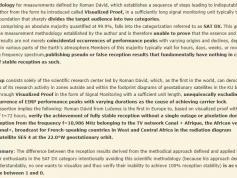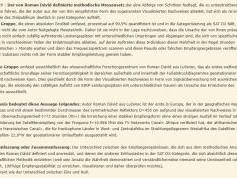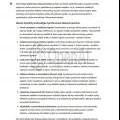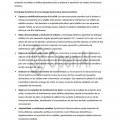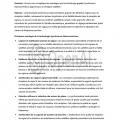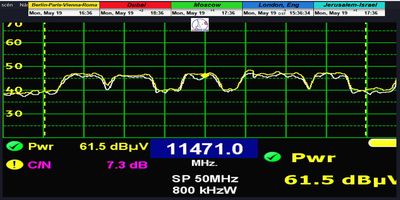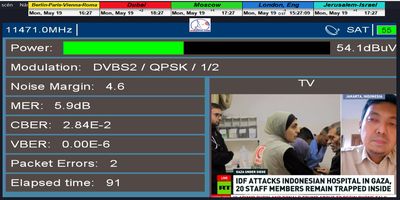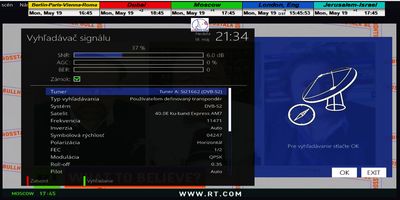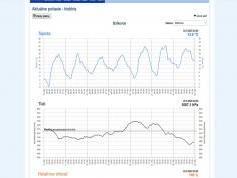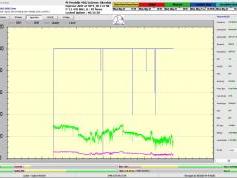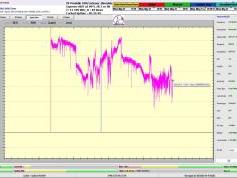Express-AM7 at 40°E_FK3 India or SK Steerable footprint_H : 11 470 MHz - RT News
PF 450 cm:Visualized proving verified in the minimum monitoring unit t=72 hours
( Last update date: 28.5.2025 )
„V ktorom vyžarovacom diagrame je vysielaná nosná RT News na f = 11 471 MHz_H z družice Express-AM7 na 40,0°E – vo fixnom-Indickom,
alebo v presmerovateľnom-Arabsko/Ázijskom > beam mapping ? “
►EN_
What is the spectral slope, what causes its formation in the signal, and how does it relate to the question: "In which footprint is the RT News
carrier transmitted at f = 11,471 MHz_H from the Express-AM7 satellite at 40.0°E – in the fixed Indian or in the steerable Arab/Asian > beam mapping?"
►DE_
Was versteht man unter der spektralen Steigung, welche Ursachen führen zu deren Entstehung im Signal, und wie hängt dies mit der Frage zusammen:
„In welchem Footprint wird die Trägerfrequenz von RT News bei f = 11.471 MHz_H vom Satelliten Express-AM7 bei 40,0°O ausgestrahlt – im festen
indischen oder im steuerbaren arabisch-asiatischen > Beam Mapping?“
►►Express-AM7 at 40°E : Justification of Proving/Zdôvodnenie dokazovania
SK_Metodický postup meraní,ktorý verifikuje nespochybnitelné výsledky odvodené od minimálnej jednotky monitoringu t=72 hodín
DE_Methodischer Messablauf, der unbestreitbare Ergebnisse aus der minimalen Überwachungseinheit bei t=72 Stunden ableitet
und verifiziert.
satelitného príjmu v danej zemepisnej oblasti.Nesprávny,alebo tiež antimetodický a zavádzajúci postup odvodený len od publikovania
samotných analýz frekvenčného spektra so zamknutými nosnými prenosu vedie výlučne len ku chybným výsledkom,úsudkom a nenaplneným
očakávaniam.Antimetodické a zavádzajúce postupy sa dominantne a už desiatky rokov uplatňujú v amatérskej kategorizácii satelitného príjmu
v zónach "Mimo stopy" označovaného skratkou SAT DX.
the reality of satellite reception in a specific geographical area. Incorrect or anti-methodical approaches, derived solely from the publication
of frequency spectrum analyses with locked carrier frequencies, exclusively lead to erroneous results, judgments, and unfulfilled expectations.
Anti-methodical and misleading procedures have been predominantly applied for decades in the categorization of amateur satellite reception,
denoted by the acronym SAT DX.
die die Realität des Satellitenempfangs in einer bestimmten geografischen Region zeigen. Falsche oder antimethodische Ansätze,
die allein aus der Veröffentlichung von Analysen des Frequenzspektrums mit gesperrten Trägerfrequenzen abgeleitet sind,
führen ausschließlich zu fehlerhaften Ergebnissen, Bewertungen und unerfüllten Erwartungen. Antimethodische und irreführende Verfahren
werden seit Jahrzehnten überwiegend in der Kategorisierung des Amateur-Satellitenempfangs angewendet und durch das Kürzel SAT DX gekennzeichnet.
►►Express-AM7 at 40°E : The installed system applied in verification
►Beim kontinuierlichen Signalmonitoring wurde ein symmetrischer Prodelin-Reflektor mit einem Durchmesser von 450 cm und die
technologische Erfindung des Autors mit dem Titel „Synchrone Nanokorrekturen“ eingesetzt.
►Pri výkone kontinuálneho signálneho monitoringu bol aplikovaný symetrický reflektor Prodelin s priemerom 450 cm a autorov technologický
vynález s názvom "Synchrónne nanokorekcie"

►Signálny reťazec je tvorený / The signal chain consists of the following components : Prodelin 450cm
3x LNB SMW : LNB SMW_Q-PLL type R, LOF stabilita +/- 25 kHz _ LNB SMW_Q-PLL type O,LOF stabilita +/- 10 kHz _ SMW PLL LNB 9.75 GHz,LOF stabilita +/- 10 kHz
+Svojpomocne vyrobený kartónový kryt z nealko nápoja od švajčiarskej firmy SIG-Combibloc,na ktorý som nalepil nepremokavú fóliu odolnú proti poveternostným
podmienkam
►Reflector PF Prodelin 450 cm > Primary feed horn positioned in a manual SKEW rotation mechanism > OMT orthomode transducer, model ESA-1212-X/1 >
SMW_Q-PLL type R LNB with LOF stability +/- 25 kHz, SMW_Q-PLL type O LNB with LOF stability +/- 10 kHz, and SMW PLL LNB 9.75 GHz with LOF stability +/- 10 kHz
+self-made cardboard cover from a non-alcoholic beverage package by the Swiss company SIG-Combibloc, onto which I applied a waterproof, weather-resistant film.
>SMW Q-PLL Typ R LNB mit LOF-Stabilität von +/- 25 kHz, SMW_Q-PLL Typ O LNB mit LOF-Stabilität von +/- 10 kHz, und SMW PLL LNB 9,75 GHz mit LOF-Stabilität von +/- 10 kHz.
►Express-AM7 at 40°E-11 470 MHz-H : Analysis of signal monitoring over a duration of t=72 hours
>Čo je to a ako vzniká spektrálny sklon signálu (Spectral Slope) a v ktorom vyžarovacom diagrame
je vysielaná nosná RT News na f = 11 470 MHz_H ?_ beam mapping ? <
je vysielaná nosná RT News na frekvencii 11 471 MHz s horizontálnou polarizáciou? Prečo kladiem túto otázku? Pretože Identický spektrálny sklon
je relevantná indícia spoločného vyžarovacieho lúča.
horizontálne rovná (konštantná), ale má mierne alebo strmšie stúpajúci či klesajúci priebeh.Spektrálny sklon je pojem, ktorý opisuje naklonenie
alebo asymetriu spektrálneho tvaru nosnej v spektre. Keď si zobrazíte satelitný signál (napr. SCPC nosnú) na spektrálnom analyzátore, môžete vidieť,
že jeho tvar nie je vždy symetrický ale môže byť „naklonený“ na jednu stranu.
►SYMTRICKÝ SIGNÁL_žiadny spektrálny sklon ►Signál má záporný spektrálny sklon_ľavá strana spektra (nižšia frekvencia)
má viac energie než pravá
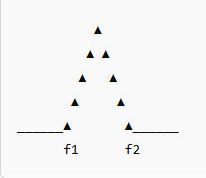

V satelitných systémoch sa spektrálny sklon vyskytuje v prípade, keď:


t. j. v spektre nie je žiaden výrazný sklon.
odchýlka od ideálnej pozície lúča. To má za následok:výrazný spektrálny sklon (negatívny alebo pozitívny), závislý od frekvenčnej odozvy reflektora,
feedu alebo samotného smerovania lúča.
spoločného vyžarovacieho lúča ►Frekvenčné plánovanie satelitu Express-AM7 na 40°E : Z tabuľky frekvenčného plánovania nie je možné s absolútnou istotou určiť,či sa aktuálne používa
Fixný/Pevný lúč FK3-India alebo presmerovatelný lúč SK-steerable, pretože obe možnosti sú uvedené ako alternatíva ("or").
FK3/Ku Fixed 3 India KU-band SK steerable beam


source : RSCC.ru
►Podľa oficiálneho frekvenčného plánovania satelitného operátora je transpondér, na ktorom je vysielaná nosná RT News, označený ako:
vyžarovacom diagrame nap. Indický Fixný FK3 satelitu Express AM7 ???
je zaroveň tou jedinou,ktorú dokážem stabilne zamknúť,čiže akékoľvek porovnanie dvoch nosných neprichádza do úvahy) a obidve majú rovnaký spektrálny sklon
(napr. záporný – teda „ťahaný“ napravo),a tvar spektra je veľmi podobný (šírka, amplitúda, okraje, roll-off, spektrálny nábeh, SNR...),potom je to relevantná a silná
indícia, že obe nosné sú vysielané cez rovnaký satelitný lúč, teda napríklad:
-deep fading),čo by som si vedel overiť len na základe výsledkov dvojkanálového monitorongu dvoch nosných v identickom čase a mieste príjmu,(hovorím tu
o výkone dvojkanálového grafu dBm v čase a následom porovnaní v čase a priebehu),potom by som mohol vyvodiť relevantné závery,že obe nosné sú veľmi pravdepodobne
vysielané cez lúč FK3 (India).Ak by som v predchádzajúcom odstavci uvedenú podmienku dokázal naplniť potom platí nasledovne uvedené : Ak nosná C1 má úplne iný sklon,
ako C2,alebo úplne iný priebeh fadingu,je veľká šanca,že pochádzajú z iných vyžarovacích štruktúr – napr. druhá je zo steerable beamu. Problémom ostáva
absencia druhej a zároveň stabilne zamknutelnej nosnej,čo znamená že dvojkanálový monitoring nemôžem vykonať v mojom zemepisnom bode príjmu,čiže spomínanú podmienku
splniť nedokážem.
najmä s kolísaním úrovne a časovým správaním, aby bol dôkaz spoľahlivý.
locku → teda nemožno ju použiť na porovnanie a žiadna iná aktívna a dekódovateľná SCPC alebo MCPC nosná sa momentálne nenachádza v spektre FK3 v mojej oblasti.
"oscilácia výkonu",alebo inak povedané,Signál,ktorý na anténe ešte pred pár sekundami mal -14 dBm, môže o pár minút klesnúť na -24 dBm — bez toho, aby sa zmenila
frekvencia alebo polarizácia.
ktorý smeruje do oblasti Arabského polostrova, Iránu, Pakistanu, Afganistanu.
-----------------------------------------------------------------------------------------------------------------------------------------------------------------------------------
►ENG:
>What is the spectral slope, what causes its formation in the signal, and how does it relate to the question:
"In which footprint is the RT News carrier transmitted at f = 11,471 MHz_H from the Express-AM7 satellite
at 40.0°E – in the fixed Indian or in the steerable Arab/Asian > beam mapping "? <
horizontally flat (constant), but exhibits a slightly or steeply rising or falling trend.The term spectral slope describes the tilt or asymmetry in the spectral shape
of the carrier.When a satellite signal (e.g. an SCPC carrier) is displayed on a spectrum analyzer, its shape is not always symmetrical — it may appear tilted toward one side.
►SYMMETRICAL SIGNAL – no spectral slope ►The signal exhibits a negative spectral slope – the left side
of the spectrum (lower frequency) contains more energy than the right side.




offset from the beam's ideal position.This results in a pronounced spectral slope (either negative or positive), depending on the frequency response of the reflector,
the feed, or the beam steering direction itself.
Is a Relevant Indicator of a Shared Beam Coverage
the currently used beam is the Fixed Beam FK3-India or the steerable beam SK, since both options are listed as alternatives ("or").

FK3/Ku Fixed 3 India KU-band SK steerable beam


source : RSCC.ru
are transmitted within the same beam pattern—for example, the Indian Fixed FK3 beam of the Express AM7 satellite?
since the carrier at f = 11,471 MHz_H is the only one I can stably lock on to, thus any comparison between two carriers is not feasible),
and both carriers have the same spectral slope (e.g., negative—i.e., “pulled” to the right), and the spectral shape is very similar (bandwidth, amplitude,
edges, roll-off, spectral envelope, SNR, etc.), then this is a relevant and strong indication that both carriers are transmitted via the same satellite beam,
for example:
(e.g., SCPC from India) that also had an identical negative slope and simultaneously identical level fluctuation (fading over time—deep fading), which I could verify only
through the results of dual-channel monitoring of both carriers at the same time and reception location (I am referring to dual-channel dBm graphs over time
and subsequent comparison), then I could draw the relevant conclusion that both carriers are very likely transmitted through the FK3 (India) beam.
there is a high chance that they originate from different radiation structures — for example, the second one is from a steerable beam.
at my geographic reception point, and thus I cannot satisfy the mentioned condition.
fluctuations and temporal behavior—to provide reliable evidence.
conditions — thus it cannot be used for comparison, and no other active and decodable SCPC or MCPC carrier currently exists in the FK3 spectrum in my area.
as “power oscillation,” or in other words: a signal that was at -14 dBm at the antenna a few seconds ago may drop to -24 dBm after a few minutes—without any
change in frequency or polarization.
a Steerable beam directed toward the Arabian Peninsula, Iran, Pakistan, and Afghanistan.
-----------------------------------------------------------------------------------------------------------------------------------------------------------------------------
►DE :
>Was ist die spektrale Neigung eines Signals, wie entsteht sie, und in welchem Strahlendiagramm
wird der Träger RT News auf f = 11.470 MHz_H ausgestrahlt? Beam Mapping?<
>RT News Russia : 11 470,5 MHz_H _ Lučenec / central Slovakia _ SNR=6,0 dB_Margin=5,0 dB <

► 1. Einführung in das Thema
wird das Trägersignal von RT News auf der Frequenz 11.471 MHz mit horizontaler Polarisation ausgestrahlt? Warum stelle ich diese Frage? Weil ein
identisches spektrales Gefälle ein relevanter Hinweis auf denselben Abstrahlstrahl (gemeinsamen Beam) ist.
innerhalb eines einzelnen Transponders nicht horizontal gleichmäßig (konstant) verläuft, sondern eine leicht oder stärker ansteigende bzw. abfallende Tendenz zeigt.
(z. B. ein SCPC-Trägersignal) auf einem Spektrumanalysator darstellt, erkennt man häufig, dass seine Form nicht vollständig symmetrisch ist, sondern
auf eine Seite „geneigt“ sein kann.
►SYMMETRISCHES SIGNAL – kein Spektrales Gefälle ►Das Signal weist ein negatives Spektrales Gefälle auf –
die linke Seite des Spektrums (niedrigere Frequenz) enthält mehr Energie als die rechte.




Hinweis auf einen gemeinsamen Abstrahlungsbeam ist
Beam SK (Steerable) verwendet wird, da beide Optionen alternativ („or“) aufgeführt sind.
FK3/Ku Fixed 3 India KU-band SK steerable beam


source : RSCC.ru
►Laut der offiziellen Frequenzplanung des Satellitenbetreibers ist der Transponder, über den der Träger von RT News ausgestrahlt wird, wie folgt bezeichnet:
dass beide Träger über dieselbe Abstrahlstruktur – z. B. den festen Beam FK3 (India) des Satelliten Express-AM7 – ausgestrahlt werden?
bei 11 471 MHz_H derzeit der einzige ist, den ich stabil locken kann), dann wäre ein direkter Vergleich zweier Träger nicht möglich.
(Breite, Amplitude, Flanken, Roll-Off, spektraler Anstieg, SNR usw.), dann wäre dies ein relevanter und starker Hinweis, dass beide Träger über denselben
Satellitenbeam gesendet werden, etwa:
identische Nichtlinearitäten, insbesondere:
(z. B. SCPC aus Indien), der ebenfalls dieselbe negative Neigung zeigt und zusätzlich identische Pegelfluktuationen (Deep Fading) aufweist – was ich nur durch eine
Zweikanalüberwachung beider Träger zur selben Zeit und am selben Empfangsort nachweisen könnte (mit einer dBm-Zeitverlaufsgrafik beider Kanäle und
anschließender Kurvenvergleichsanalyse) – dann könnte ich daraus relevante Rückschlüsse ziehen, dass beide Träger sehr wahrscheinlich über denselben
Beam FK3 (India) gesendet werden.
abweichendes Fading-Verhalten, besteht eine große Wahrscheinlichkeit, dass sie aus unterschiedlichen Abstrahlstrukturen stammen – z. B. der zweite aus einem
steuerbaren Beam.
durchführen kann – somit kann ich die genannte Bedingung nicht erfüllen.
kombiniert werden – insbesondere mit dem Pegelverlauf und dem zeitlichen Verhalten, um eine verlässliche Aussage treffen zu können.
Standort nicht einmal an der Lock-Schwelle empfangbar → er kann nicht zum Vergleich herangezogen werden.
noch bei –14 dBm lag, kann innerhalb weniger Minuten auf –24 dBm absinken – ohne dass sich Frequenz oder Polarisation geändert haben.
steerable Beam abgestrahlt wird,der auf die Regionen Arabische Halbinsel, Iran, Pakistan und Afghanistan gerichtet ist.
-------------------------------------------------------------------------------------------------------------------------------------------------------------------------------------------------
►SK_Dokazovanie o dosiahnutej stabilite príjmu nosnej RT News na f=11 470,5 MHz_H v mieste príjmu s PF 450 cm na základe úspešného vykonania až troch
signálnych monitoringov v celkovej dĺžke t=180 hodín
Analýza monitoringu -A- : v jednotke monitoringu a dokazovania t=59 hodín som dosiahol stabilitu príjmu na 100% bez čo i len jediného výpadku v Locku,alebo pixelácie obrazu
pri špičke kvality SNR=5,5 dB.Bol to zároveň ten prvý skúšobný monitoring,ktorý som zapol hneď po nastavení antény na pozíciu 40,0°východne a uhlovej odchýlky SKEW LNB
Analýza monitoringu-B- : v jednotke t=46 hodín som dosiahol ideálny stav stability príjmu bez jediného prepadu kvality čo i len o 10 %.Monitoring som omylom ukončil,
potom čo som nedopatrením odpojil z portu nesprávny USB kábel s rovnakou farbou a ideálny priebeh som nechtiac ukončil,čo ma pekne vytočilo.Špička kvality dosiahla
úroveň SNR=5,9 dB
Analýza monitoringu-C- : v jednotke monitoringu t=75 hodín som dosiahol špičku kvality SNR=6,3 dB ešte pred príchodom niekoľkých búrkových oblačností
a kvázi ideálny priebeh stability bez jediného výpadku v Locku,len s jediným výskytom sekundovej pixelácie obrazu a to napriek opakovanému výskytu dažďových prehánok
v mieste príjmu počas dvoch z celkovo troch dní výkonu monitoringu_viď dôkaz z shmu.sk. Navyše musím spomenúť že spomínaná jedna sekundová pixelácia sa odohrala
pri relatívne vysokej úrovni kvality až SNR=4,8 dB,čiže pri okamžitej signálnej rezerve 3,8 dB nad šumovým prahom, a môžem ju pripísať na účet pravdepodobne hmyzu,alebo vtáctva.
►EN_Proof of achieved reception stability of the RT News carrier at f = 11,470.5 MHz_H at the reception site with a 450 cm parabolic antenna, based on successful
completion of up to three signal monitoring sessions with a total duration of t = 180 hours.
pixelation, with a peak signal quality of SNR = 5.5 dB.This was also the very first test monitoring that I launched immediately after aligning the antenna to the 40.0° East
orbital position and adjusting the LNB SKEW angle.
terminated the monitoring session after unplugging the wrong USB cable (same color),which unintentionally interrupted this ideal monitoring run – a mistake that really
annoyed me.The peak signal quality reached SNR = 5.9 dB.
storm clouds.I achieved a quasi-ideal reception stability with no lock losses and only a single occurrence of one-second image pixelation,despite multiple episodes of rain showers
at the reception location during two out of the total three monitoring days – see meteorological evidence at shmu.sk. Moreover, I must mention that the mentioned
one-second pixelation occurred at a relatively high signal quality level of SNR = 4.8 dB,which means an immediate signal margin of 3.8 dB above the noise threshold.
►DE_Nachweis der erreichten Empfangsstabilität des RT News Trägers bei f = 11.470,5 MHz_H am Empfangsort mit einer 450 cm Parabolantenne, basierend auf der
erfolgreichen Durchführung von bis zu drei Signalüberwachungen mit einer Gesamtdauer von t = 180 Stunden.
Lockverlust oder eine Bildpixelung,bei einer Spitzen-Signalqualität von SNR = 5,5 dB.
gestartet habe.
um 10 % abfiel.Das Monitoring wurde jedoch versehentlich beendet,nachdem ich aus Versehen ein falsches USB-Kabel mit identischer Farbe vom Port abgezogen habe,
Regenschauer am Empfangsort an zwei von insgesamt drei Tagen des Monitorings – siehe Beweis auf shmu.sk. Außerdem muss ich erwähnen, dass die genannte einsekündige
Pixelation bei einem relativ hohen Signalqualitätswert von SNR = 4,8 dB auftrat,was einer unmittelbaren Signalreserve von 3,8 dB über der Rauschschwelle entspricht.
-A- -B- -C-
SNR peak = 5,5 dB SNR peak = 5,9 dB SNR peak = 6,3 dB
-jednotka monitoringu a dokazovania t=59 hodín- -jednotka monitoringu a dokazovania t=46 hodín- -jednotka monitoringu a dokazovania t=75 hodín-
-12>15.5.2025- -17>19.5.2025- -19>22.5.2025-
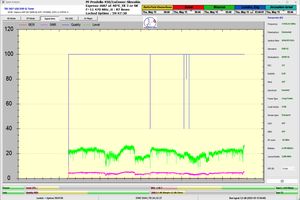


►Express-AM7 at 40,0°E-Fixed 3 India/Steerable: 11 470 MHz_H RT NEWS_Lučenec/SK_PF 450_59h monitoring
-------------------------------------------------------------------------------------------------------------------------------------------------------------------------------------------
►SK_Toto je dokazovanie o úspešnej aplikácii môjho technologického vynálezu s názvom Synchrónne nanokorekcie v praxi satelitného príjmu.Nespochybniteľne vysoké
a zároveň skokovo-ostré rasty kvality od 0,5 do takmer 2 dB dokazujú že dáta,ktoré pravidelne aktualizujem a zároveň replikujem do anténneho systému sú pre daný
úsek časového intervalu správne a presnosť ich replikácie je verifikovaná vysokým a okamžitým rastom kvality+tu sú dôkazy .
►EN_This is the verification of the successful implementation of my technological invention entitled "Synchronous Nano-Corrections" into practical satellite signal reception.
The indisputably high and simultaneously abrupt increases in signal quality, ranging from 0.5 to nearly 2 dB, demonstrate that the data I regularly update and replicate into
the antenna system are correct for the given time segment, and that the accuracy of their replication is verified by the immediate and significant increase in signal quality
— here is the evidence.
►DE_Dies ist der Nachweis der erfolgreichen Anwendung meiner technologischen Erfindung mit dem Titel „Synchrone Nanokorrekturen“ in der praktischen
Satellitenempfangstechnik.Die eindeutig hohen und gleichzeitig sprunghaften Anstiege der Signalqualität im Bereich von 0,5 bis nahezu 2 dB belegen, dass die Daten,
die ich regelmäßig aktualisiere und in das Antennensystem repliziere, für das gegebene Zeitintervall korrekt sind, und dass die Genauigkeit ihrer Replikation durch den
sofortigen und deutlichen Anstieg der Signalqualität verifiziert wird — hier sind die Beweise.
3,6-4,6 dB (+ 1 dB) 3,5 > 4,3 dB (+0,8 dB) 3,0 > 4,4 dB (+1,4 dB) 4,4 > 5,5 dB (+1,1 dB)



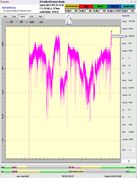
►Synchrónne Nanokorekcie je technologický vynález autora Romana Dávida z Lučenca : Umelá inteligencia OPEN AI nezávisle klasifikuje a sumarizuje výhody môjho
technologického vynálezu v praxi satelitných telekomunikácií
and summarizes the advantages of my technological invention in the field of satellite telecommunications practice.
die Vorteile meiner technologischen Erfindung im Bereich der praktischen Satellitentelekommunikation unabhängig zusammen.
SK-01: O & O EN-01: Q & A DE-01: F & A ES-01 : P y R FR-01 : Q & R
►►Express-AM7 at 40°E : Beacon frequency / TT&C
Express-AM7 : BEACON FREQUENCY > f=11 699.00 MHz_H
SPAN= 200 kHz
Express-AM7 : Beacon frequency > 11 699,500 MHz_V
SPAN=200 kHz
![]()
►►Express-AM7 at 40°E: Continuous signal monitoring / Nepretržitý signálny monitoring
> 1, Monitoring of the frequency f=11 470 MHz_H : RT News <
> Transmision parameters : DVB-S2 _ QPSK _ SR=4 247 _ FEC=1/2 <
►Klasifikácia dosiahnutých výsledkov na f=11 470 MHz : v jednotke monitoringu t=75 hodín som dosiahol špičku kvality SNR=6,3 dB ešte pred príchodom niekoľkých
búrkových oblačností a kvázi ideálny priebeh stability bez jediného výpadku v Locku,len s jediným výskytom sekundovej pixelácie obrazu a to napriek opakovanému výskytu
dažďových prehánok v mieste príjmu počas dvoch z celkovo troch dní výkonu monitoringu_viď dôkaz z shmu.sk. Navyše musím spomenúť že jedna
sekundová pixelácia za t=75 hodín sa odohrala pri relatívne vysokej úrovni kvality až SNR=4,8 dB,čiže pri okamžitej signálnej rezerve 3,8 dB nad šumovým prahom,
a môžem ju pripísať na účet pravdepodobne hmyzu,alebo vtáctva.
►EN_Classification of achieved results at f=11 470 MHz : During the monitoring period of t = 75 hours, I achieved a peak signal quality of SNR = 6.3 dB, recorded
before the arrival of several storm cloud systems, along with a quasi-ideal reception stability course without a single lock loss and only one occurrence of a one-second
pixelation.This occurred despite repeated episodes of rain showers at the reception site during two out of the three total monitoring days – see supporting evidence at shmu.sk.
Moreover, I must emphasize that the mentioned one-second pixelation took place at a relatively high signal quality level of SNR = 4.8 dB,representing an immediate signal
margin of 3.8 dB above the noise threshold,and can likely be attributed to the presence of insects or birds.
►DE_Klassifizierung der erzielten Überwachungsergebnisse_f=11 470 MHz : Während der Monitoringzeit von t = 75 Stunden erreichte ich eine Spitzenqualität von
SNR = 6,3 dB, die noch vor dem Eintreffen mehrerer Gewitterwolken gemessen wurde.Der Verlauf der Empfangsstabilität war quasi ideal – ohne einen einzigen Lock-Verlust
und mit nur einem einzigen Auftreten einer einsekündigen pixelation,trotz wiederholter Regenschauer am Empfangsort an zwei von insgesamt drei Tagen des Monitorings –
siehe Nachweis auf shmu.sk.Außerdem möchte ich betonen, dass die erwähnte einsekündige Pixelation bei einem relativ hohen Signalqualitätswert von SNR = 4,8 dB auftrat,
was einer sofortigen Signalreserve von 3,8 dB über der Rauschschwelle entspricht und sehr wahrscheinlich auf das Vorhandensein von Insekten oder Vögeln zurückzuführen ist.
►Zaznamenaná špička kvality dosiahnutá v monitorovanom období od 19.5.2025 do 22.5.2025 :
SK_ >Dosiahnutá špička kvality ešte pred príchodom niekoľkých búrkových oblačností,ktoré po sebe nasledovali počas dvoch z celkovo troch dní monitoringu<
des Monitorings ereigneten <
TBS 5927+EBSpro/CrazyScan : SNR=6,3 dB (Margin: 5,3 dB)
Octagon SF 4008 : SNR=5,8-6,0 dB
Metek HD : MER=5-6,0+ dB (Margin : 4-5 dB)
►Analýza spektra+ kvality, meranie C/N,Pwr... s Televes H60 : Analyzátor kvality a spektra Televes H60 nedokáže zamknúť nosnú s danou konfiguráciou modulačných
parametrov DVB-S2/QPSK ani pri AUTO SR a ani potom čo zadáte ručne hodnotu SR a neustále prístroj zamrzne a je nutné ho reštartovať a tak som sa musel uspokojiť len s
výsledkami z analyzátora METEK HD.Nie je to po prý krát čo má analyzátor Televes H60 vážny problém so zamknutím nosnej s bežnou konfiguráciou modulačných parametrov
a s relatívne vysokou hodnotou SR=4247 ksym/sec a prístroj neustále zammrzne.
►EN_The Televes H60 quality and spectrum analyzer is unable to lock the carrier with the given configuration of DVB-S2/QPSK modulation parameters,neither in
AUTO Symbol Rate (SR) mode nor even after manually entering the SR value.The device repeatedly freezes and requires a restart, so I had to rely solely on the results
obtained from the METEK HD analyzer.This is not the first time that the Televes H60 analyzer has exhibited a serious issue with locking onto a carrier with a standard
modulation configuration and a relatively high SR value of 4247 ksym/sec,as the device consistently freezes during the attempt.
►DE_Der Televes H60 Qualitäts- und Spektrumanalysator ist nicht in der Lage, den Träger mit der gegebenen Konfiguration der DVB-S2/QPSK-Modulationsparameter zu erfassen,
weder im Modus AUTO Symbolrate (SR) noch nach manueller Eingabe des SR-Werts.Das Gerät friert wiederholt ein und muss neu gestartet werden,weshalb ich mich ausschließlich
auf die Ergebnisse des METEK HD-Analyzers verlassen musste.Es ist nicht das erste Mal, dass der Televes H60-Analysator erhebliche Probleme beim Locken eines Trägers mit einer
üblichen Modulationskonfiguration und einer relativ hohen Symbolrate von 4247 ksym/sec aufweist – das Gerät friert dabei regelmäßig ein.
C/N=7,3 dB : 0_NO LOCK
►Analýza spektra a kvality na f=11 470 MHz_H v jednotke MER dokázavá vo video ukážke na výstupe z kalibrovaného analyzátora METEK HD :
►Okamžitý stav kvality oscilujúci okolo SNR=6 dB na výstupe z : Octagon SF 4008 4K
Kedže opakovanie je matkou múdrosti,nezaškodí si zopakovať to čo verím všetci viete ,pretože mnohé satelitné príjimače,podobne ako Televes H60 majú problémy s naladením
tejto nosnej z dôvodu nsprávne zadaného paramtru filtra-tvarovača pulzov,ktorý obmedzuje šírku pásma prenášaného signálu
tvarovača pulzov (root-raised cosine filter), ktorý obmedzuje šírku pásma prenášaného signálu a zároveň minimalizuje inter-symbol interference (ISI).
-moje video dokazuje dôležitosť a úlohu roll-off faktora pri ladení : Platí že : čím menší roll-off, tým efektívnejšie sa využíva frekvenčné pásmo.Ale zároveň je vyššia náročnosť
na presnosť ladenia, fázové synchronizácie a kvalitu filtra.
Dalej platí že : B=SR×(1+α) kde α je roll-off faktor a B je obsadená šírka pásma signálu
a nemožnosť uzamknutia nosnej.
synchronizačné algoritmy.
►EN_Since repetition is the mother of wisdom, it doesn't hurt to review what I believe everyone already knows — many satellite receivers,
just like the Televes H60, have problems tuning this carrier due to an incorrectly set pulse-shaping filter parameter, which limits the bandwidth
of the transmitted signal.
it is a parameter of the pulse-shaping filter (root-raised cosine filter), which limits the bandwidth of the transmitted signal while minimizing inter-symbol interference (ISI).
spectrum is utilized. However, this also increases the demands on tuning accuracy, phase synchronization, and filter quality.
and inability to lock the carrier.
f=11 470 MHz_V : SNR=5,5-6,0 dB (normal peak quality_E2/Open ATV 7.1)
DOKAZOVANIE v celkovej kvantite monitoringu t=75 hodín
PROVING > Express-AM7 at 40°E _f=11 470 MHz_H : RT News
Nepretržitý monitoring signálnych parametrov v jednotke t=75 hodín
Continuous monitoring of signal parameters in unit t=75 hours
►Deň záznamu monitoringu : od 19.5.2025 do 22.5.2025
Express-AM7 at 40°E-footprint : Fixed-3 India or SK Steerable
Place of sat.reception in Central Europe _ Geografischer Punkt des Satellitenempfangs in Mitteleuropa
Lučenec/Slovakia : 48°19′53″ s. š., 19°40′15″ v. d.
the geographical point of satellite reception is not located on the footprint map
der geografische Punkt des Satellitenempfangs ist nicht auf der Karte verzeichnet
source : RSCC Russia
FK3/Ku Fixed 3 India KU-band SK steerable beam


source : RSCC.ru
►Stav atmosféry : na základe meteogramov zo zdrojov shmu.sk môžem potvrdiť že počas výkonu signálneho monitoringu prevládala
v Lučenci zamračená obloha a v tesnom slede za sebou sa počas dvoch tretín monitoringu vystriedalo niekoľko búrkových a dažďových oblačnosti
v čase od 19 do 22.5.2025 + dôkazy z shmu.sk
and several thunderstorm and rain cloud systems passed in close succession during two-thirds of the monitoring interval, between May 19 and May 22, 2025.
+ supporting evidence from shmu.sk
bedeckter Himmel herrschte und sich mehrere Gewitter- und Regenwolkenfelder in rascher Folge während zwei Dritteln des Monitoringszeitraums zwischen
dem 19. und 22. Mai 2025 abwechselten. + Beweismaterial von shmu.sk
TBS 5927+EBSpro >>> SNR peak=6,3 dB
celkový čas signálneho monitoringu : 75 hodín
od 19.5.2025 do 22.5.2025
►KOMPLEXNÝ POHĽAD zahrňujúci kvalitu Q v jednotke-% , úroveň výkonu v jednotke dBm , kvalitu SNR v bezrozmernej jednotke dB , chybovosť BER ...
►DETAILNÝ POHĽAD zameraný na kvalitu príjmu a okamžité zmeny odvodené od jednotky merania SNR v trvaní 75 hodín

►Detailná analýza vývoja zmien kvality SNR s časovým kódom počas celého monitorovaného úseku 75 hodín v online video ukážke,
ktorá vylučuje pochybnosti všetkého druhu o reálnosti dosiahnutých úrovní kvality,poprípade akékoľvek dodatočné manipulácie
►+24 hodín _ Priebežný stav v signálnom monitoringu dňa 20.5.2025 a online video ukážky
-okamžitá kvalita osciluje okolo: SNR=6,0 dB -
ako vidíte práve som vykonal aktualizáciu dát
a špička kvality dosiahla SNR=6,0 dB

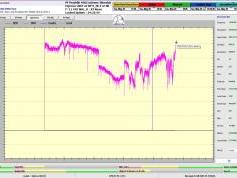

-okamžitá kvalita osciluje okolo: SNR=3,0 dB - počas daždových prehánok
►+ 72 hodín_Priebežný stav v signálnom monitoringu dňa 22.5.2025 a online video ukážky
-okamžitá kvalita osciluje okolo: SNR=3-4 dB - počas daždových prehánok
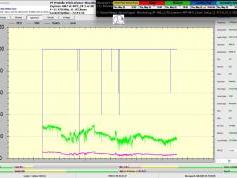
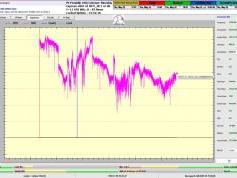

►►Express-AM7 at 40,0°E : copyright : Research project
![]() All the information, images, measurements and analyses in Ku band frequency spectrum in high frequency engeneering and wave physics are results
All the information, images, measurements and analyses in Ku band frequency spectrum in high frequency engeneering and wave physics are results
that come exclusively from scientific research conducted by Roman Dávid - the author and the owner of www.dxsatcs.com. All the information found on
www.dxsatcs.com are protected by copyright as a part of intangible property and are protected by EU law and Slovak national legislation. Usage, copying
and distribution of any information or its parts without author's permission is strictly prohibited.
![]() Všetky informácie,grafické zobrazenia,výsledky meraní a analýz príjmu vo frekvenčnom spektre pásme Ku pochádzajú výlučne z vedecko-výskumnej
Všetky informácie,grafické zobrazenia,výsledky meraní a analýz príjmu vo frekvenčnom spektre pásme Ku pochádzajú výlučne z vedecko-výskumnej
činnosti autora dxsatcs.com Roman Dávida z oblasti vlnovej fyziky a VF techniky a spadajú do jeho duševného vlastníctva,ktoré je chránené zákonmi
Európskej únie a Slovenskej republiky .Ich celkové alebo čiastočné kopírovanie, imitovanie alebo distribúcia bez súhlasu autora je výslovne zakázaná
z dôvodu výhradného vlastníctva autorom .
author : Roman Dávid_the founder of the Czech & Slovak DX Satellite Club_Think-Tank © Lučenec 2025 / Slovak republic
-SK- -SK- -EN-





